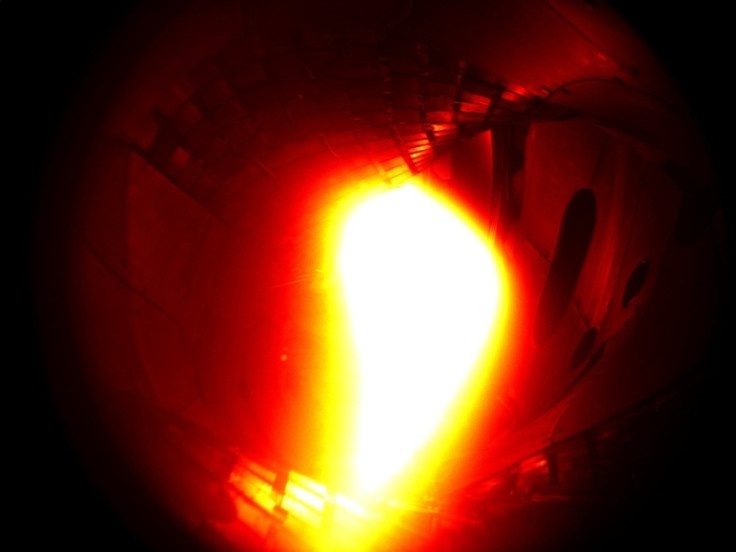Stellarator: Wendelstein 7-X fusion device tested in another step towards cheap, limitless energy

The first experimental test of the "stellarator" has been carried out in German, with the Wendelstein 7-X fusion device producing helium plasma – a breakthrough that could lead to limitless and cheap energy. It took scientists from the Max Planck for Plasma Physics nine years to build the machine, and they have spent over a year preparing for the tests.
During the last 12 months, scientists have tested every technical system, including the superconducting coils, heating devices and the measuring instruments. Now, scientists have fired up the machine's magnetic field and initiated the experiment. Helium gas was fed into the evacuated plasma vessel and heated it in a short pulse. Plasma – extremely hot gas – could be observed by the cameras and other devices installed in the machine.
Fusion research aims to develop a cheap and limitless source of energy that is sustainable. It would work in a similar way to the sun, harvesting energy from fusing atoms together. However, there are several roadblocks preventing scientists from doing this. To get energy, gas from deuterium and tritium has to be heated to 100C million degrees, which has so far proven impossible. As well as this, the plasma must not come into contact with the cold vessel walls, so must somehow be suspended in mid-air.

One method of achieving this suspension is through a device called the tokamak – a ring-shaped magnetic chamber – and the other is the stellarator. Both work by creating a magnetic cage that allows the super-hot plasma to float inside a vacuum chamber. At present, scientists think the tokamak will be capable of producing an energy-supplying plasma and one is being built at the French research centre Cadarache.
The Wendelstein 7-X stellarator will not produce energy. Instead, it will demonstrate that stellarators are suitable as part of a power plant because it will be able to suspend plasma generated. The machine will put the quality of the plasma equilibrium and confinement at the same level as the tokamak.
Researchers also hope the stellarator will show off its fundamental advantage over the tokamak – its ability to operate continuously. The tokamak can only operate in pulses without additional auxiliary equipment. The Wendelstein 7-X and the magnetic cage it creates keeps the ultra-thin plasma suspended inside the vessel and consumes hardly energy once switched on.
Thomas Klinger, leader of the Wendelstein 7-X project, said: "We're starting with a plasma produced from the noble gas helium. We're not changing over to the actual investigation object, a hydrogen plasma, until next year. This is because it's easier to achieve the plasma state with helium. In addition, we can clean the surface of the plasma vessel with helium plasmas."
Discussing the first experimental test, Hans-Stephan Bosch, who is involved in machine operation, said: "We're very satisfied. Everything went according to plan." Researchers now need to extend the duration of plasma discharges and work out how to produce and heat the helium plasmas with microwaves. They hope to produce the first plasma next year.
© Copyright IBTimes 2025. All rights reserved.






















